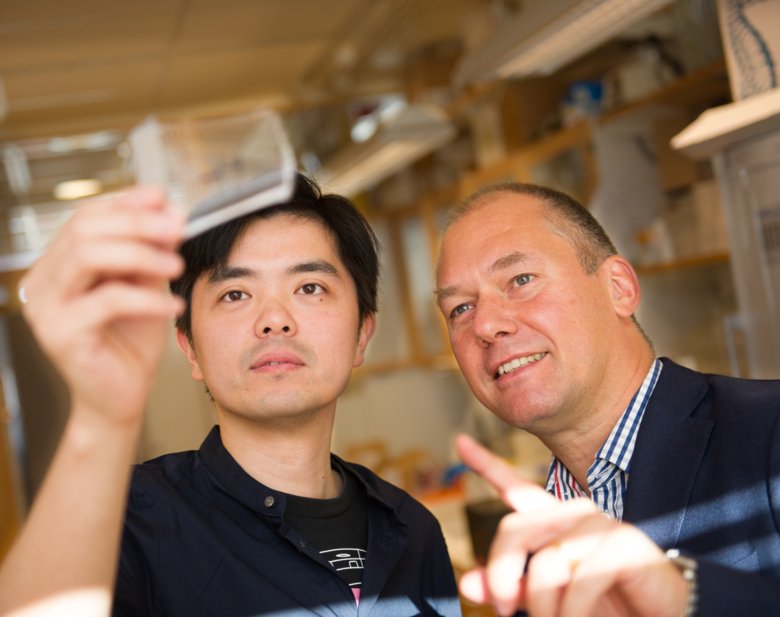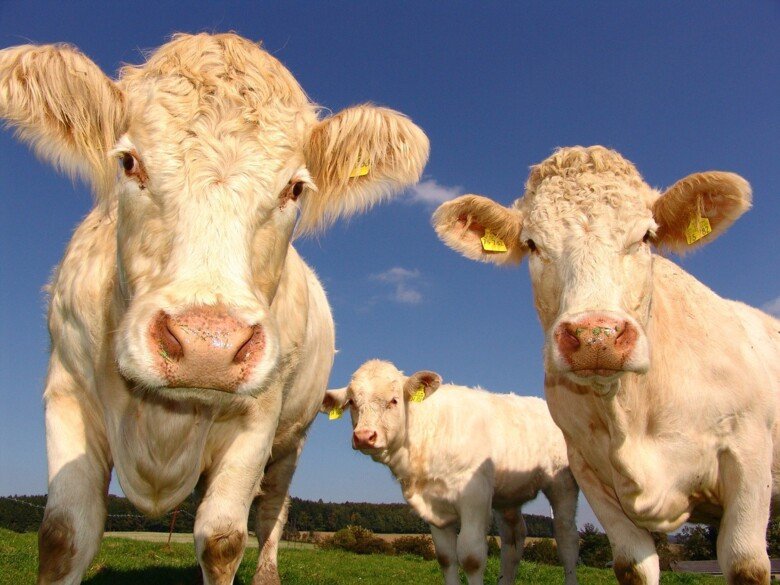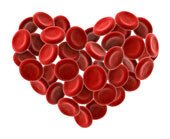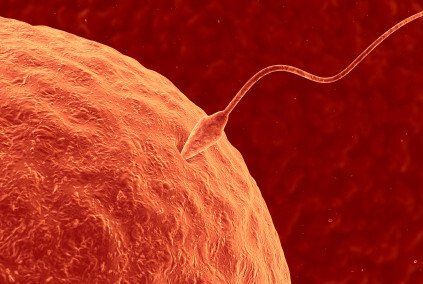More diseases linked to defects in selenium proteins
The selenium protein thioredoxin reductase is found in all cells of the body and is important, among other things, for cell division and to combat programmed cell death, apoptosis. Tumours often contain high levels of the enzyme as cancer cells can produce more of it in order to survive and and divide faster.

Text: Mårten Göthlin. First published in Swedish in the magazine Medicinsk Vetenskap, 1 2017
Elias Arnér, Professor at the Department of Medical Biochemistry and Biophysics, is working on the development of medicines which can prevent cancer cells from using the protein and in this way prevent the tumour’s development.
“We’re trying to exploit the fact that cancer cells use this protein to a higher degree than regular cells. If we block the protein, then many cancer cells will die,” says Elias Arnér.
New type of cancer medicine
But cancer medicines often have strong side effects as they also affect the healthy cells. Elias Arnér’s research team believes in a new type of cancer medicine which will hopefully have less side effects.
“We’ve seen that healthy cells, in contrast to cancer cells, not just survive with this medicine, but that they can also adapt to the new situation. They switch to other signal paths and use other proteins to survive, which can make them more resistant than cancer cells,” says Elias Arnér.
He believes that selenium proteins as a research field will continue to grow.
“We’re finding that more and more diseases can be linked to defects in selenium proteins.”
Timeline: Selenium a vital toxin for humans
A rare trace element from the bedrock turned out to be a prerequisite for human life. Since the discovery of selenium 200 years ago, researchers have tried to understand more.

Despite the fact that selenium can be almost as toxic as arsenic, the element is necessary for several proteins in the body to function. Twenty-five human genes code for proteins which contain selenium. We consume selenium mainly from fish, milk, cheese and imported plants.
1817 | Messy pyrite. In his chemical factory, Jöns Jacob Berzelius discovers that a red sludge forms when sulphuric acid is extracted from pyrite. Eventually he discovers a new element – he calls it ‘selenium’ after the Greek goddess of the moon Selene.

1934 | Dizzy poison. In the 1930s selenium is linked to the livestock diseases Blind staggers and Alkali disease, which make animals lose their hair and blindly wander around in circles. Experiments show that animals have eaten plants with a high level of selenium from the ground.
1957 | Vital. The German researcher Klaus Schwarz tries to find substances which are vital for human beings by feeding rats a meagre diet of yeast and sugar. The rats die but when he switches to American brewer’s yeast, they survive. Selenium is considered to be the decisive factor.
1971 | Selenium protects the blood. Red blood cells from rats can be protected against breakdown if selenium is added to the food, show researchers from Wisconsin. It is later found that selenium is irreplaceable for some of the body’s antioxidant enzymes, including the enzyme glutathione peroxidase, which protects red blood cells against reactive oxygen molecules.
1973 | Natural building block. The biochemist Theresa Stadtman finds the 21st amino acid in the body, selenocysteine. It has a sulphur atom of cysteine replaced with selenium. The difference resulted in enzymes with selenium instead of sulphur being 100 times more efficient.

1979 | Causes diseases in humans. For the first time researchers link selenium deficiency to Keshan disease, a disease of the heart muscle which affects children and youth in areas with selenium deficient soil in China. Research shows that a virus infects and damages the heart muscle cells, but they are protected with selenium in the food.
1990s | Flaky shoulders. The World Health Organization includes medicines with selenium against certain fungus infections in its list of important medicines. In addition to combatting dandruff funguses, the medicine can also inhibit cell division on the scalp.
1990s | Evolution. Researchers find that the amino acid selenocysteine is built into proteins by a unique synthesis process which is different from how some other amino acids are built into proteins. Researchers study when the mechanism has been developed and the benefits of such a complicated system.

2000s | Fast-swimming sperm. Several studies show that selenium impacts male fertility by contributing to the structure and mobility of sperm.
2010s | Double-edged cancer sword. Since the 1960s researchers have suspected that selenium can have a protecting effect against cancer. However, this is still controversial as the results are not clear-cut.
Future challenges
Ideal dose unclear
There is still a lack of knowledge on how we should adapt the intake of selenium in order to benefit our health in the best manner – for different diseases and when we are healthy. Researchers still have little knowledge of which quantity and form of selenium is ideal.
Role in the body investigated
We do not know yet how all proteins which contain selenium function at a molecular level. This knowledge is important in order to try to understand all roles of selenium in the human body.
Hope of new treatments
With greater knowledge of how much selenium we require – and why – new opportunities will emerge to develop treatments to prevent and combat diseases in which selenium proteins play a role.
Sources
Kristal et al., Journal of the National Cancer Institute 2014, Reeves and Hoffmann, Cellular and molecular life sciences 2009, Flohé Biochimica et Biophysica Acta 2009, Köhrle et al., Biological Chemistry 2000, www.who.int, se2017.se, Rsc.org, upac.org/publications/ci/2011/3305/5_trofast. html, Livsmedelsverket.se.
